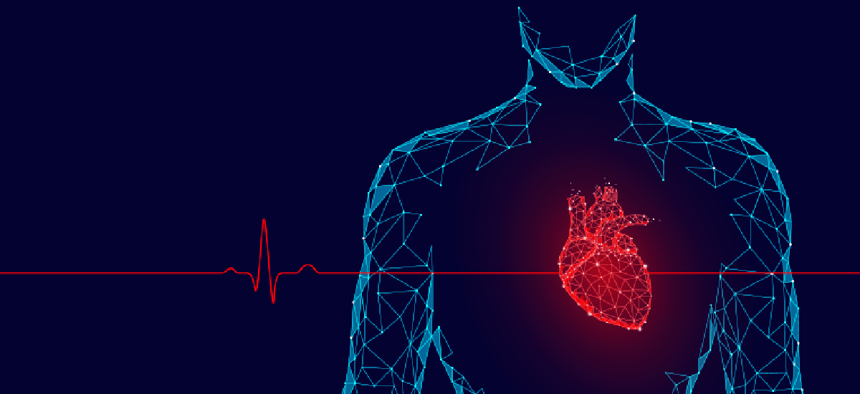DOD builds laser that IDs remote subjects by their heartbeat
The Defense Department has developed a device that uses an infrared laser to detect unique cardiac signatures of people 200 meters away.
The Defense Department has developed a device that uses an infrared laser to detect unique cardiac signatures of individuals up to 200 meters away.
Somewhat like the contact infrared sensors that use lasers to record a patient's pulse by tracking how the light changes in response to blood flow , the Pentagon's device, called Jetson, uses laser vibrometry to detect chest movements as an individual's heart beats, according to a report in MIT Technology Review. It can even detect these slight vibrations through clothes.
For Jetson, researchers modified a commercial device used to check vibrations in remote structures, like wind turbines, so that it could keep a quarter-sized laser beam on a target to get a reading. An algorithm converts the laser signals into a cardiac signature, which researchers said is 95% accurate when the subject is sitting or standing still.
Identifying a person with Jetson would require a database of cardiac signatures, but it could help warfighters positively identify suspects on whom they had taken earlier readings.
Besides the advantage of biometric identification at a distance, Jetson relies on heartbeats, which are considered more unique identifiers than fingerprints and irises and more difficult to counterfeit. It's also harder for subjects to "fool" the technology the way sunglasses and headscarves "confuse" facial recognition systems.
Heartbeat-based ID has been adopted for commercial use already. Nymi, a company specializing in enterprise biometric authentication, offers a wristband that uses a person's electrocardiogram as an identifier. NASA also developed a technology it licenses for verifying identity based on a person's electrocardiogram signal, but both of these approaches require direct contact with a subject's skin.
A researcher at the State University of New York at Buffalo built a radar-based remote cardiac sensor, the MIT Technology Review reported, that is just as accurate but only works up to 20 meters away.
NEXT STORY: Lawmaker worried about DOD leadership shuffle






